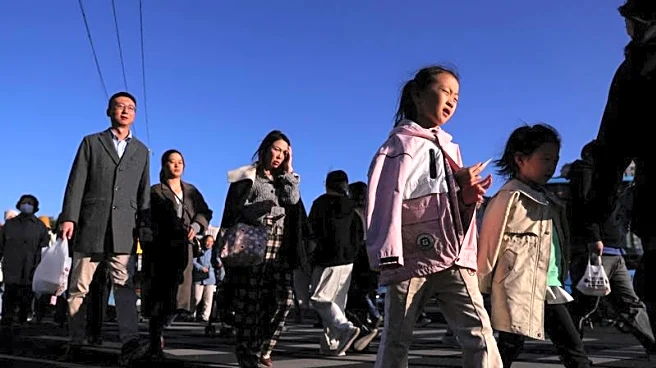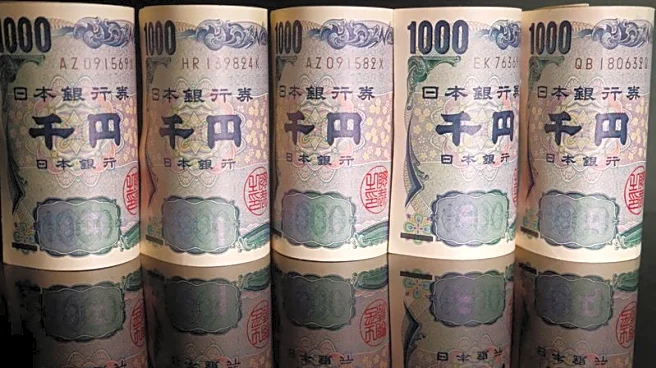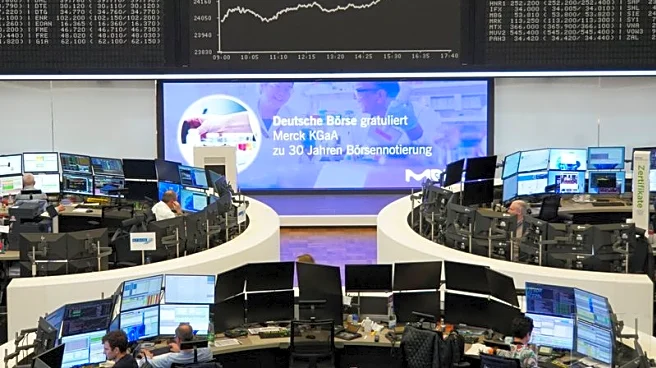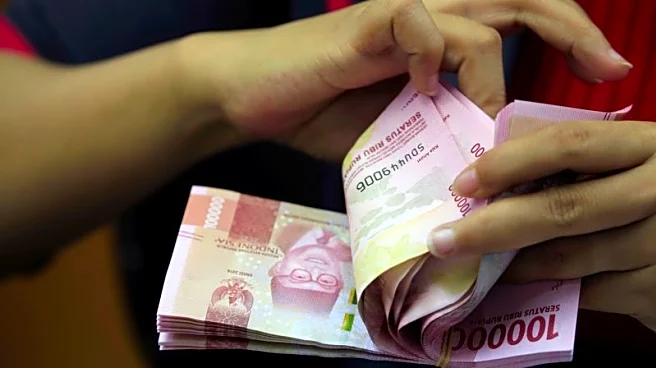What's Happening?
China's banking sector has shown mixed signals in September, with a notable increase in new lending but a slowdown in overall loan growth. According to UOB Kay Hian, banks issued $180.6 billion in new loans, more than doubling the previous month's figures
but falling short of market expectations. Despite this increase, the growth of outstanding bank loans has slowed to 6.6% year-on-year, marking the weakest pace this year. Total social financing also rose, surpassing forecasts, yet the growth rate edged down, indicating persistent softness in private-sector credit demand.
Why It's Important?
The current lending trends in China reflect broader economic challenges, including sluggish corporate borrowing and cautious bank lending practices. This situation could have significant implications for global markets, particularly if China's economic growth continues to slow. The need for additional fiscal measures to support domestic demand suggests potential policy shifts that could impact international trade and investment. For U.S. businesses and investors, these developments may influence market dynamics, especially for companies with significant exposure to Chinese markets.
What's Next?
As China's banks navigate these challenges, potential policy responses could include further fiscal stimulus or regulatory adjustments to encourage lending. The global financial community will be watching closely for any signs of economic stabilization or further deterioration. U.S. stakeholders, including policymakers and investors, may need to reassess their strategies in light of these developments, particularly if China's economic slowdown affects global supply chains and trade relations.














